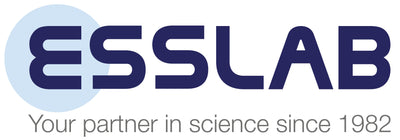1. Introduction
Heavy metal contamination in food has emerged as a significant public health concern, particularly in products such as chocolate and protein powders. This article presents an overview of the sources and risks of heavy metal contamination, the importance of reliable analytical methods, and the critical role that Certified Reference Materials (CRMs) play in ensuring accurate and reproducible quality control testing.
2. Environmental Sources of Contamination
Toxic metals—including cadmium (Cd), lead (Pb), arsenic (As), and mercury (Hg)—are not intentionally added to food, but enter the food chain through environmental exposure, including:
-
Soil Contamination: Crops absorb heavy metals from polluted agricultural soils.
-
Water and Air Pollution: Irrigation and atmospheric deposition contribute to uptake.
-
Manufacturing and Packaging: Contamination may occur during processing or through contact with packaging materials.
Specific examples include: 
-
Protein Powders: Derived from raw plant materials such as rice, hemp, rapeseed and peas, which readily absorb metals from soil or irrigation water.
-
Chocolate: Cocoa plants accumulate cadmium from certain soil types; contamination may also occur during fermentation, processing, or packaging.

3. Health Risks and the Need for Testing
Even trace amounts of heavy metals can cause severe health issues, such as:
-
Neurological disorders
-
Developmental delays in children
-
Carcinogenic effects
Given the potential toxicity, rigorous testing is essential to prevent unsafe products from reaching consumers. Public awareness and regulatory scrutiny have increased demand for high-quality testing and transparent reporting.
4. Analytical Methods for Detection
Advanced instrumentation is necessary to detect ultra-trace levels of heavy metals. Key analytical techniques include:
-
ICP-MS (Inductively Coupled Plasma Mass Spectrometry): The Gold Standard for trace metal analysis due to its high sensitivity and accuracy.
-
ICP-OES (Inductively Coupled Plasma Optical Emission Spectrometry): Used for multi-elemental detection in water and food matrices.
-
AAS (Atomic Absorption Spectrometry): Suitable for routine single-element analysis.
These methods require strict calibration and validation protocols to ensure result accuracy.
5. The Role of Certified Reference Materials (CRMs)
CRMs are essential for ensuring the reliability of analytical results. Their primary roles include:
include:
-
Calibration of Instruments: Providing known reference values to adjust instrument sensitivity and accuracy.
-
Method Validation: Confirming that analytical techniques can detect target metals at relevant concentration levels.
-
Traceability: Linking results to internationally recognized standards (e.g., ISO, NIST).
Without CRMs, laboratories risk generating unreliable data, leading to potential regulatory violations and public health risks.
6. Regulatory Standards and Compliance
Food standards agencies worldwide have established strict limits for heavy metal content in food, including:
-
Food Standards Agency (UK): Monitors heavy metal content in seafood
-
FDA Closer to Zero Initiative (USA): Targets reduction of metals in baby food
-
European Food Safety Authority (EFSA) Regulations: Targets maximum levels for cadmium and lead in food products.
-
Codex Alimentarius: International food safety benchmarks
Meeting these standards requires reproducible analytical test results supported by validated methods and CRMs. Testing laboratories are required to be ISO/IEC 17025 accredited.
7. Ensuring Consistency and Reproducibility
Reproducibility of test results is critical for both compliance and credibility. CRMs enable:
-
Inter-lab Comparability: Standardised calibration ensures consistency across testing sites.
-
Audit Readiness: Documentation and traceability of results support regulatory inspections.
-
Product Release Assurance: Verifiable data gives manufacturers confidence in product safety.
Example: The FDA’s Closer to Zero targets demand ultra-low detection limits in baby foods, which are only achievable with accurate calibration and method validation using CRMs.

8. Building Consumer Trust Through Transparency
Informed consumers increasingly expect full transparency from food manufacturers. Investment in high-quality QC testing, backed by CRMs, helps brands:
-
Demonstrate compliance with safety standards
-
Build credibility and loyalty – avoid adverse publicity and high cost due to e.g. UK FSA Food Alerts and batch recalls
-
Differentiate products in competitive markets
For manufacturers of sensitive products like infant formula or health supplements, rigorous testing protocols are no longer optional—they are essential.
9. Reference Standards and Methods
|
Standard Method |
Purpose |
|
FDA EAM 4.7 |
Elemental analysis in food and supplements |
|
EPA Method 6020B |
ICP-MS for metals in solid waste and food |
|
USP <233> |
Harmonized procedure for elemental impurities |
|
AOAC 999.10 |
Arsenic, cadmium, lead, mercury in foods |
|
ISO 11885 |
ICP-OES method for water and food matrices |
|
EN 15763 |
ICP-MS determination of lead, cadmium, mercury |
|
EPA Method 7010 |
Lead in soils and solid waste |
|
NIST SRM 2384 |
Certified values for metals in baking chocolate |
|
|
|
10. Conclusion
Heavy metal contamination in food is a growing challenge that demands a constant scrutiny. Reliable testing backed by Certified Reference Materials is fundamental to ensuring public safety, meeting regulatory requirements, and maintaining consumer trust.
scrutiny. Reliable testing backed by Certified Reference Materials is fundamental to ensuring public safety, meeting regulatory requirements, and maintaining consumer trust.
References:
Determination of Metals in Protein Powder Samples, Sourced in Ireland, with Risk Assessment for Irish Consumers (Link)
A multi-year heavy metal analysis of 72 dark chocolate and cocoa products in the USA (Link)
Cocoa-laden cadmium threatens human health and cacao economy: A critical view
ICH Q3D - International Council for Harmonisation - Heavy Metals Testing (Link)
Recent developments in the use of Certified Reference Materials for baby food safety analysis (Link)
Sample Preparation Guide part 31 - Samples Containing Cadmium

Leave a comment